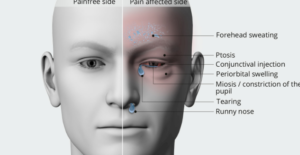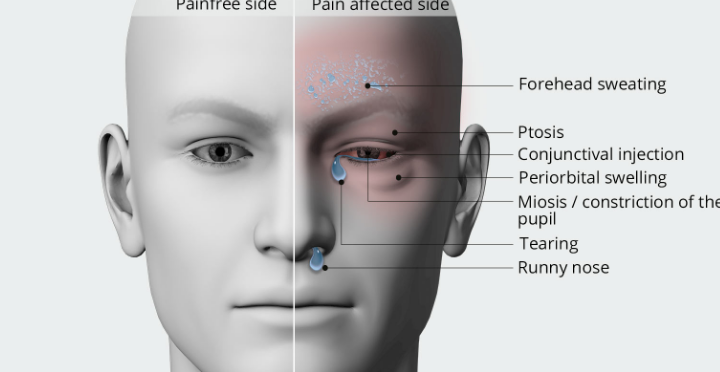Neurosurgical Approach to the Treatment of Chronic Migraines
Chronic migraine is a condition affecting millions of people worldwide, which causes debilitating pain and reduces quality of life. Most migraine sufferers manage their condition with medications and lifestyle changes, but some people experience severe, refractory migraines that do not respond to conventional treatments. Neurosurgical interventions offer a promising alternative for these patients. This article explores neurosurgical approaches to chronic migraine treatment, highlighting the techniques, benefits, challenges, and future advancements in this field.
Understanding Chronic Migraines Chronic migraine is considered when the headaches occur 15 or more days per month, with at least eight days having features of migraine, over three months. The condition mostly brings in severe throbbing pain, sensitivity to light and sound, nausea, and aura symptoms.
Chronic migraines result from genetic, environmental, and neurological factors in combination. Many times, overactive pain pathways in the brain are the root of the problem. Neurosurgical treatments aim to address these pathways and provide long-term relief.
When Is Neurosurgery Considered for Migraines?
Neurosurgical interventions are typically reserved for patients with chronic migraines that have not responded to other treatments, such as:
- Preventive medications, which include beta-blockers, antiepileptics, or antidepressants
- Acute treatments, such as triptans or NSAIDs
- Non-pharmacological approaches, including cognitive-behavioral therapy and acupuncture
Before surgical intervention, patients are extensively investigated to confirm that their migraines are indeed refractory and that a neurosurgical approach is indicated.
Neurosurgical Techniques for Chronic Migraine Treatment
Several neurosurgical techniques have been developed to target the pathways and structures involved in chronic migraine.
1. Occipital Nerve Stimulation (ONS)
Occipital nerve stimulation is a small implanted device that sends electrical impulses to the nerves at the back of the head. These impulses disrupt pain signals and reduce migraine frequency and intensity.
Procedure: Electrodes are implanted under the skin near the occipital nerves and connected to a pulse generator placed in the chest or abdomen.
Effectiveness: Studies have demonstrated significant reductions in headache days for patients undergoing ONS.
Advantages include minimal invasiveness and the possibility to adjust the settings according to each patient’s need.
2. Deep Brain Stimulation (DBS)
Deep brain stimulation is considered a more recent intervention, stimulating specific brain structures, including those of the hypothalamus involved in migraine pathways.
Procedure: Electrodes implanted deep within the brain are connected with an external pulse generator.
Effectiveness: So far, DBS has usually been indicated for rare, severe headache syndromes (cluster headaches); however, the first positive observations in chronic migraine cases make this intervention promising.
Challenges: Invasive nature and the need for precise targeting.
3. Peripheral Nerve Decompression Surgery
This surgical approach targets peripheral nerves that may be compressed by surrounding tissues, contributing to migraine pain.
Procedure: Surgeons identify and release compressed nerves, such as the supraorbital, supratrochlear, or occipital nerves, to alleviate pain.
Effectiveness: Many patients report significant improvements in migraine symptoms after decompression surgery.
Advantages: A one-time procedure with potential for long-term relief.
4. Trigeminal Nerve Stimulation (TNS)
The trigeminal nerve is very important in migraine pathophysiology. Trigeminal nerve stimulation includes the non-invasive or minimally invasive modulation of activity of this nerve.
Procedure: External or implanted devices deliver electrical impulses to the trigeminal nerve.
Effectiveness: Promising results in reducing migraine frequency and severity.
5. Vagus Nerve Stimulation (VNS)
Another target for the treatment of migraine is the vagus nerve, as it influences many functions of the brain and body.
Procedure: A device is implanted near the vagus nerve in the neck, delivering gentle electrical stimulation.
Effectiveness: VNS has shown promise in reducing migraine symptoms, particularly in patients with comorbid conditions like epilepsy or depression.
Benefits of Neurosurgical Treatments
Neurosurgical approaches offer several advantages for patients with chronic migraines:
- Long-Term Relief: Many procedures provide sustained symptom reduction for years.
- Reduced Dependence on Medication: The majority of patients become less dependent on painkillers and prophylactic drugs post-surgery, reducing adverse side effects.
- Improved Quality of Life: Patients with decreased frequency and intensity of migraine attacks return to everyday activities with increased autonomy.
Risks and Challenges
Neurosurgical treatments do come with certain risks and challenges, despite the aforementioned advantages:
Invasive: Procedures such as DBS are extremely invasive and call for highly qualified surgeons.
Possible Complications: These include infection, malfunction of the device, or nerve damage.
Access and Cost: Many neurosurgical procedures are extremely expensive and not all medical centers offer the service
Patients contemplating any such procedures must consider potential benefits versus risks and have extensive consultation with the health care team.
Future Directions for Neurosurgery in Migraine Treatment There is rapid development ongoing in neurosurgical treatments of migraine, with active investigations in an attempt to improve outcomes and expand possibilities.
1. Enhanced Imaging for Precise Surgery
New neuroimaging technologies, including functional MRI and PET scans, are allowing neurosurgeons to understand migraine pathways better and intervene more precisely.
2. Non-Invasive Neuromodulation
New non-invasive neuromodulation devices are being developed that offer similar benefits to implanted devices without surgery. Examples include transcranial magnetic stimulation (TMS) and transcutaneous electrical nerve stimulation (TENS).
3. AI-Driven Personalized Treatment
AI and machine learning now can allow doctors to tailor-make treatment programs because they analyze patient-specific data, predict outcomes, and optimize surgical techniques.
4. Regenerative Medicine
Stem cell therapies and gene editing have started to be investigated for the repair of nerve pathways that get damaged in chronic migraine.
Conclusion
Neurosurgical approaches are a new frontier in the treatment of chronic migraine, especially in patients whose symptoms are resistant to conventional treatments. From nerve stimulation techniques through innovative proposals, including AI-driven interventions, neurosurgery holds out a prospect of a better quality of life and relief for a long time.
Although these treatments carry risks, ongoing technologic and precision medicine advances continue to improve their safety and effectiveness. For people who suffer from chronic migraine, the addition of neurosurgery to multidisciplinary treatment options opens a new frontier in the management of the debilitating condition.

Also Read :
- AI and Machine Learning in Neurosurgical Practices
- The Importance of Neurosurgical Research in Treating Rare Disorders
- MRI-Guided Neurosurgical Interventions in Brainstem Lesions
- MRI Innovations in Neurosurgical Robotics and Navigation Systems
- Integration of MRI and Robotics in Neurosurgical Procedures
